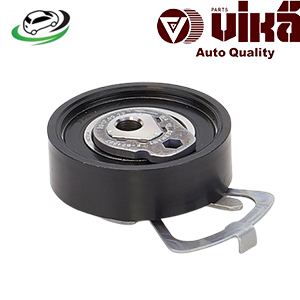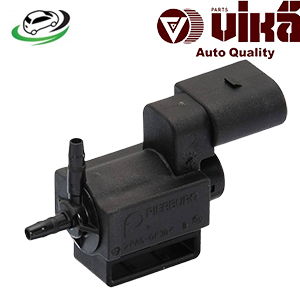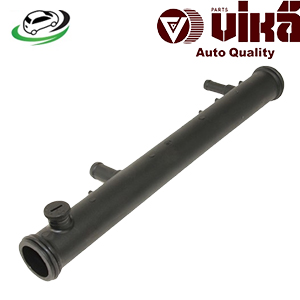-6%
Get Volkswagen Touareg 1 V6 Water Distribution Pipe 022121050A
Water distribution pipes are essential components in plumbing systems that transport potable (drinking) water from the source—whether that be a municipal supply or a private well—to households, commercial buildings, and industrial facilities. The effectiveness, safety, and efficiency of water distribution systems depend significantly on the types of pipes used, their installation, and their maintenance. This guide explores the various aspects of water distribution pipes, including their types, materials, installation techniques, maintenance practices, and the benefits they provide.
1. What Are Water Distribution Pipes?
Water distribution pipes are specifically designed to carry water from a supply point to various distribution points within a plumbing system. These pipes are integral to ensuring a reliable supply of clean, safe drinking water to consumers. They can vary in size, material, and configuration, depending on the specific needs of the water distribution system.
Types of Water Distribution Systems:
- Pressurized Systems: These systems use pumps to create pressure that moves water through pipes, ensuring a consistent supply even in elevated locations.
- Gravity-Fed Systems: Water is delivered via gravity from a higher elevation (like a water tank or reservoir) to lower areas, relying on natural gravitational force.
2. Types of Water Distribution Pipes
Water distribution pipes come in various types, each suited for different applications, environments, and pressures. Below are some of the most commonly used types:
1. Polyvinyl Chloride (PVC) Pipes:
- Characteristics: Lightweight, corrosion-resistant, and easy to install. They are available in various diameters and pressure ratings.
- Applications: Commonly used in residential and commercial water supply lines, irrigation systems, and drainage.
2. Chlorinated Polyvinyl Chloride (CPVC) Pipes:
- Characteristics: Similar to PVC but with added chlorine, making them suitable for hot water applications. They can withstand higher temperatures and pressures than standard PVC.
- Applications: Typically used for residential hot water distribution, industrial applications, and commercial buildings.
3. PEX (Cross-Linked Polyethylene) Pipes:
- Characteristics: Flexible, resistant to scale and chlorine, and easy to install. They can expand, making them less likely to burst in freezing conditions.
- Applications: Widely used for residential water supply lines, heating systems, and retrofitting older buildings.
4. Copper Pipes:
- Characteristics: Durable and resistant to corrosion, with a long service life. They can withstand high temperatures and pressures.
- Applications: Commonly used in residential and commercial plumbing for water distribution, especially in areas with high water quality standards.
5. Galvanized Steel Pipes:
- Characteristics: Made from steel coated with zinc to prevent rusting. These pipes are sturdy and can handle high pressure.
- Applications: Historically used for water supply lines, but less common now due to corrosion issues.
6. Ductile Iron Pipes:
- Characteristics: Strong and durable, resistant to corrosion with proper coating. These pipes can handle high pressure and have a long service life.
- Applications: Often used in municipal water supply systems, especially for larger diameter pipes.
7. Concrete and Asbestos-Cement Pipes:
- Characteristics: Heavy and robust, with good resistance to corrosion. However, asbestos cement pipes are less common today due to health concerns associated with asbestos.
- Applications: Used in large-scale municipal systems for water and sewage distribution.
3. Key Factors in Selecting Water Distribution Pipes
When choosing water distribution pipes, several factors should be considered:
1. Water Quality:
The type of pipe material must be compatible with the water quality. Some materials may react with certain water chemistries, affecting the safety and taste of drinking water.
2. Pressure and Temperature:
Pipes must be selected based on the pressure and temperature of the water they will carry. For example, CPVC is suitable for hot water, while PVC is more suitable for cold water applications.
3. Installation Environment:
Considerations must include whether the pipes will be buried underground, exposed to the elements, or located within walls. For example, PEX is ideal for areas subject to freezing temperatures due to its flexibility.
4. Local Building Codes:
Always check local plumbing codes and regulations, as they may dictate specific materials and installation methods for water distribution systems.
4. Installation Techniques for Water Distribution Pipes
Proper installation is critical for the longevity and efficiency of water distribution pipes. Below are some key techniques:
1. Trenching:
When installing buried pipes, trenches must be dug to the appropriate depth, considering factors like frost lines and soil stability.
2. Joining Methods:
Various joining methods are used depending on the pipe material:
- PVC and CPVC: Typically glued with solvent cement.
- PEX: Uses crimp or clamp fittings for secure connections.
- Copper: Soldering or compression fittings are common.
3. Testing:
After installation, pipes should be tested for leaks and pressure integrity. This may involve pressurizing the system and inspecting joints for any signs of leakage.
4. Insulation:
In areas prone to freezing, pipes should be insulated to prevent freezing and subsequent burst pipes.
5. Maintenance of Water Distribution Pipes
Regular maintenance is essential to ensure the longevity and efficiency of water distribution systems. Here are some maintenance practices:
1. Regular Inspections:
Conduct routine inspections to check for signs of leaks, corrosion, or damage. Pay special attention to joints and fittings, as these are often weak points.
2. Flushing:
Periodically flush the water system to remove sediment and contaminants, especially in older pipes or systems with stagnant water.
3. Water Quality Testing:
Test the water quality regularly to ensure it meets safety standards and to identify any potential contamination issues.
4. Preventative Repairs:
Address any minor issues promptly to prevent them from escalating into more significant problems. This may include replacing worn fittings or addressing small leaks.
5. System Upgrades:
Consider upgrading older pipes to modern materials to improve efficiency and reduce maintenance needs. For example, replacing galvanized pipes with PEX or CPVC can enhance water flow and quality.
6. Benefits of Using Quality Water Distribution Pipes
Investing in high-quality water distribution pipes brings several advantages:
1. Reliability:
Quality pipes ensure a consistent and reliable water supply, minimizing the risk of interruptions.
2. Safety:
Using safe, approved materials ensures that drinking water remains uncontaminated, protecting public health.
3. Longevity:
High-quality materials resist corrosion and wear, leading to a longer lifespan and reduced need for replacements.
4. Efficiency:
Properly installed and maintained pipes optimize water flow, reducing energy costs associated with pumping and heating water.
5. Cost Savings:
While high-quality materials may have a higher upfront cost, they often result in long-term savings by reducing maintenance and replacement expenses.
7. Conclusion
Water distribution pipes are a fundamental component of any plumbing system, playing a crucial role in delivering safe drinking water to consumers. Understanding the types, materials, and proper maintenance practices is essential for ensuring a reliable and efficient water supply. By investing in quality materials and following best practices for installation and maintenance, homeowners, businesses, and municipalities can provide safe and efficient water distribution systems that serve their communities effectively. Ultimately, the success of any water distribution system hinges on the selection and care of its piping infrastructure, making it a vital consideration for anyone involved in plumbing and infrastructure development.
Follow us on Facebook for more parts.




Reviews
Clear filtersThere are no reviews yet.